Multi-Platform GEO Strategy: Optimizing for ChatGPT, Perplexity, and Claude Simultaneously
Each AI search platform processes and prioritizes content differently. While ChatGPT emphasizes conversational context, Perplexity weights source credibility, and Claude focuses on factual accuracy. Optimizing for all platforms simultaneously requires understanding these distinct preferences while building unified authority signals.
The multi-platform opportunity is massive: businesses that optimize across all major AI engines capture more total AI citations than those focusing on single platforms. Yet most GEO efforts target only ChatGPT, missing significant visibility opportunities.
Platform-Specific GEO Optimization Requirements
ChatGPT Optimization Priorities
Conversational Content Structure: ChatGPT favors content written in natural, conversational tones that flow logically from question to answer. Structure content as if responding to spoken questions.
Context Richness: Provide comprehensive background information that helps ChatGPT understand the broader context surrounding specific topics. Detailed explanations perform better than bullet-point summaries.
Authority Demonstration: Include clear expertise indicators—industry experience, credentials, case studies, and specific examples from real implementations.
Perplexity Optimization Focus
Source Citation Integration: Perplexity heavily weights content that includes credible source citations. Reference industry studies, expert opinions, and authoritative publications throughout your content.
Factual Precision: Ensure all statistics, dates, and specific claims are accurate and up-to-date. Perplexity cross-references information for accuracy before citation.
Link Authority: Internal and external linking to reputable sources strengthens content credibility. Perplexity rewards content that demonstrates awareness of authoritative industry resources.
Claude Optimization Strategies
Logical Structure: Claude prioritizes content with clear, logical progression from premise to conclusion. Use structured argumentation and evidence-based reasoning.
Balanced Perspectives: Present multiple viewpoints when appropriate. Claude favors content that acknowledges complexity and avoids oversimplification.
Implementation Practicality: Include specific, actionable guidance alongside theoretical explanations. Claude frequently cites content that bridges theory with practical application.
Universal GEO Optimization Principles
Despite platform differences, certain optimization strategies improve performance across all AI engines:
E-E-A-T Compliance: Experience, Expertise, Authoritativeness, and Trustworthiness remain fundamental. All AI platforms prioritize content demonstrating these qualities.
Question-Intent Mapping: Structure content to directly address the specific questions your audience asks AI platforms. Research actual AI queries in your industry rather than assuming traditional keyword patterns apply.
Semantic Content Organization: Use clear headings, logical information hierarchy, and semantic HTML structure that helps AI engines understand content relationships and extract relevant information efficiently.
Cross-Platform Content Syndication Strategy
Core Content Hub: Create comprehensive resources on your primary domain that serve as authoritative references for AI engines seeking detailed information.
Platform-Specific Adaptations: Adapt core content for different platforms while maintaining consistent messaging. LinkedIn articles, Medium posts, and industry forum contributions each require platform-specific optimization.
Citation Network Building: Develop relationships with other authoritative sources in your industry. Mutual citations strengthen authority signals across all AI platforms.
Technical Implementation for Multi-Platform Success
Schema Markup Optimization: Implement structured data that clearly identifies your content type, author credentials, and topic coverage. This helps all AI engines understand content context.
Content Accessibility: Ensure all platforms can easily access and process your content. This means clean HTML, fast loading times, and mobile-responsive design.
API-Friendly Structure: Some AI engines access content through APIs. Structure your content to be easily parsed and extracted programmatically.
Performance Tracking Across Platforms
Monitor citations across all major AI platforms weekly. Look for patterns in which content gets cited by which platforms, and adjust your optimization strategy accordingly.
Platform Performance Comparison: Track which platforms generate the most citations for your content type. Focus optimization efforts on platforms showing the strongest performance while maintaining presence across all major engines.
Content Gap Analysis: Identify topics where competitors dominate citations across multiple platforms. These represent opportunities for comprehensive content development that can capture significant AI visibility.
The Unified GEO Advantage
Multi-platform GEO optimization creates compound visibility benefits. Content optimized for all major AI engines builds broader authority signals, increases total citation volume, and provides resilience against platform algorithm changes.
Start with platform-specific optimization for your most important content, then scale the approach across your content library. The businesses building unified GEO strategies now will dominate AI search visibility as these platforms continue expanding their influence on customer discovery and decision-making.


